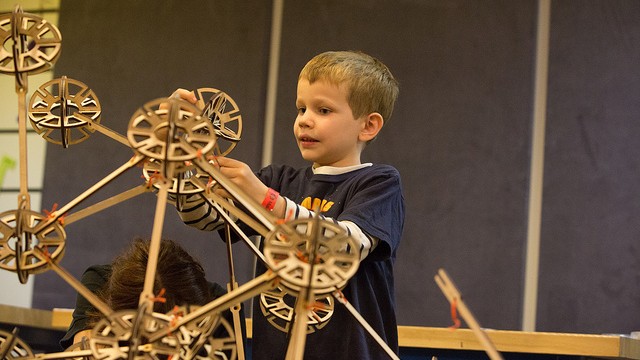
At the White House Maker Faire recently, where President Obama invited “makers” of all ages to display their creations, the President investigated a robotic giraffe, a red weather balloon and shot a marshmallow cannon made by a student. With so much fanfare and media attention on the event, some educators are hopeful that the idea of tinkering as a way of learning might finally have made it back to the mainstream. But will the same philosophy of discovery and hands-on learning make it into classrooms?
“Most of the people that I know who got into science and technology benefited from a set of informal experiences before they had much formal training,” said Dale Dougherty, editor of Make Magazine and founder of Maker Faire on KQED's Forum program. “And I mean, like building rockets in the backyard, tinkering, playing with things. And that created the interest and motivation to pursue science.”
That spirit of play and discovery of knowledge is missing from much of formal education, Dougherty said. Students not only have no experience with making or the tools needed to build things, they're often at a tactile deficit. “Schools haven’t changed, but the students have,” Dougherty said. “They don’t come with these experiences.”
Dougherty often watches kids as they interact with hands-on experiments or materials at Maker Faire events. “It’s almost aggressively manipulating and touching things because they’re not used to it,” he said, which is unfortunate because that kind of work is in high demand in doing engineering or mechanical jobs.
“Even at the university level we’re choosing talent based on math scores, not on capabilities and demonstrated abilities,” Dougherty said. He thinks engineering programs could learn something from art schools when it comes to the application process. No art school accepts a student without examining a portfolio of work that demonstrates the student can do the work required required of them and has the potential to grow. Dougherty helped lobby MIT to begin accepting “maker portfolios” along with other application materials to ensure the things kids make are considered alongside test scores, essays and recommendations.

